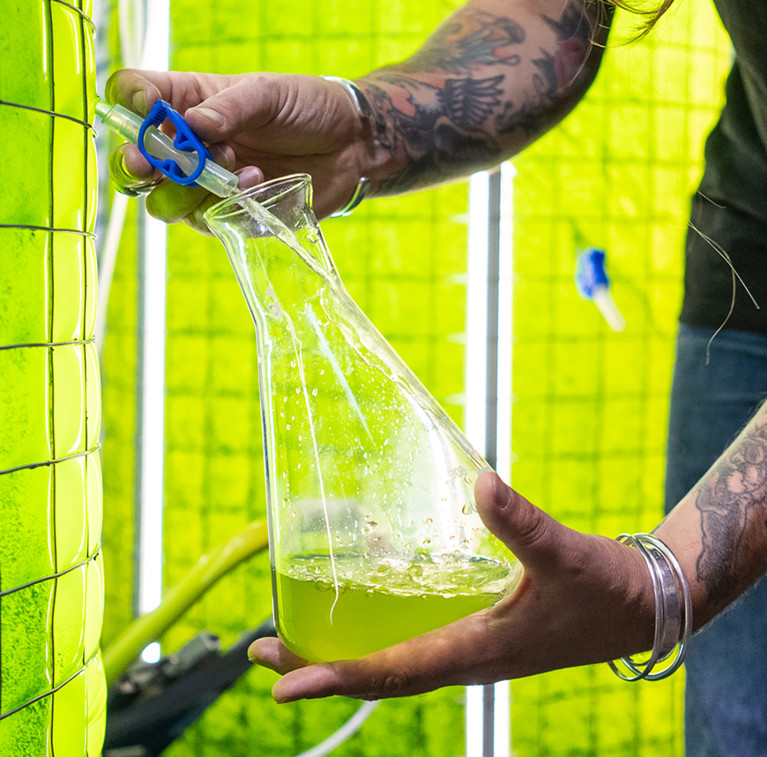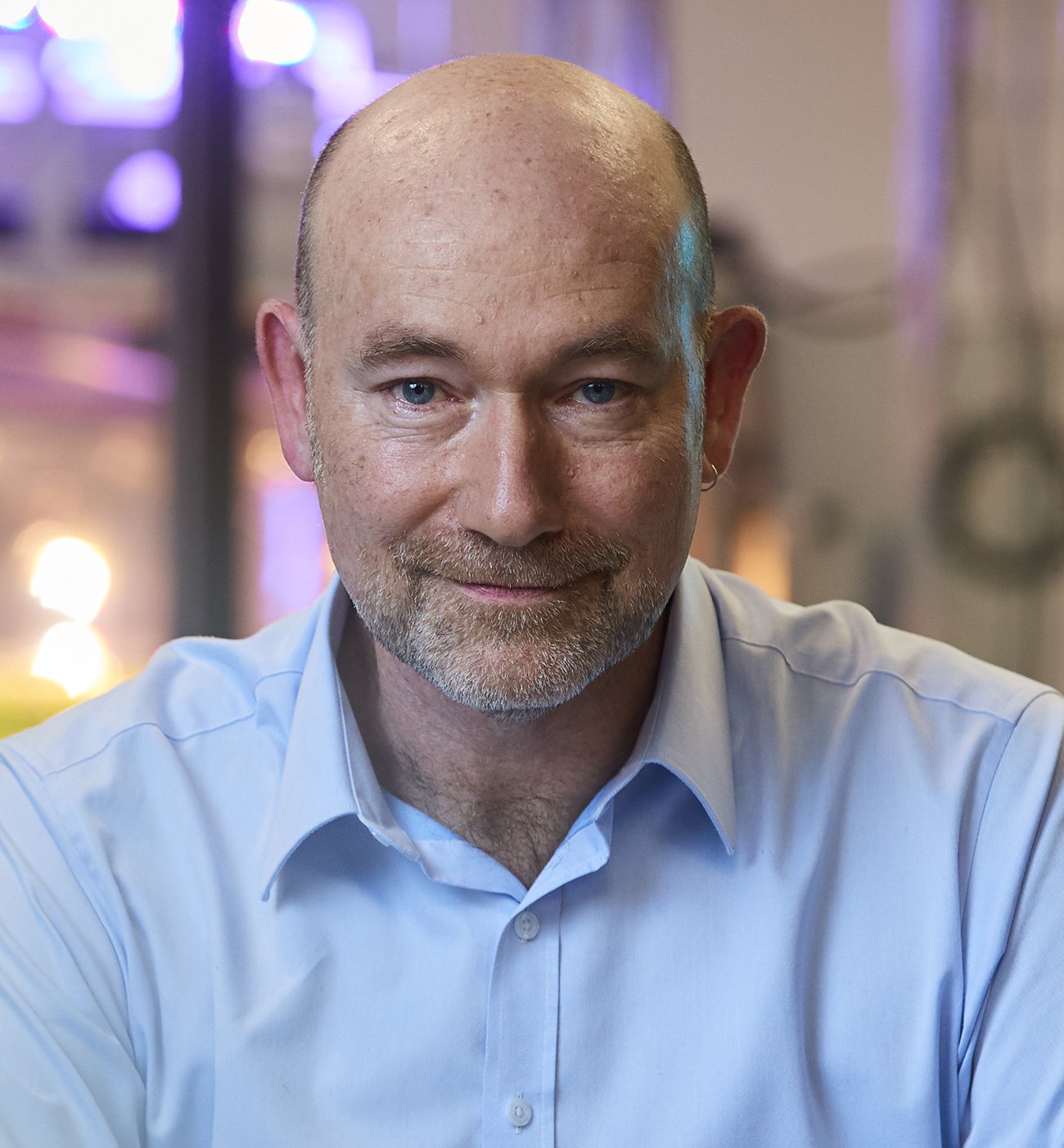- Posted on 24 Jul 2025
- 5 minutes read
UTS and local craft brewery Young Henrys are turning the carbon waste from making beer into climate-friendly livestock feed.
The fermentation process that creates every beer releases carbon dioxide into the atmosphere. Like most breweries, Young Henrys previously vented this carbon as waste.
That changed when they teamed up with researchers from the University of Technology Sydney (UTS) and drafted an unexpected green ally.
Algae has the ability to remove carbon dioxide from the atmosphere and convert it into oxygen and solid carbon: making for the perfect pairing.
"It's a win-win for everybody," says Professor Peter Ralph, Director of the UTS Climate Change Cluster (C3).
"This project is a great example of how we work with industry to understand real problems and co-design solutions with impact.”
Working with industry partners with an aligned mission is really easy because we both want to achieve useful solutions to help save the planet.

The collaboration, which brought together scientists, brewers, and farmers, began nearly seven years ago with a simple question: could carbon emissions from brewing be captured and put to good use?
An ingenious cycle: capturing carbon, creating value
UTS researchers designed a small reactor that captured carbon emissions from Young Henrys' fermentation process and pumped it into bioreactors where algae grew.
"Algae naturally converts carbon dioxide into oxygen through photosynthesis," explains Professor Ralph, who leads the project team.
"It's an elegant, low-tech way to remove carbon from beer production."
The researchers then realised that the algae – rich in protein – could be blended with brewer’s spent grain, a byproduct of beer brewing often fed to livestock.
This blend then makes for nutritious animal feed.
But that sparked a new line of inquiry: could this algae-enriched feed reduce methane emissions from livestock?
"We started looking at different microalgae species and their effect on reducing methane," Professor Ralph says.
The team conducted in-vitro tests to measure methane production from various algae strains. These findings informed a series of lamb feeding trials, with promising results.
Lambs fed the algae-rich diet produced less methane and, in blind taste tests, their meat was actually preferred by consumers.
"It was an unexpected bonus," Professor Ralph says. "Not only did the algae reduce methane emissions, but it enhanced the flavour and nutritional value of the meat."
The success of the early trials attracted further investment.
Funding from Meat and Livestock Australia supported continued livestock trials over the past few years.
Now, an Australia's Economic Accelerator Ignite grant is helping the team scale their work through high-throughput algae screening.
Our new methods allow us to screen more algae, more quickly, to identify those with the greatest potential for reducing methane.

"There are over 300,000 species of algae, and we've only tested a handful," says Professor Ralph.
This subsequent research phase could be transformative, allowing climate-resilient supply chains that empower farmers to reduce emissions while maintaining productivity.
Circular economy in action
The Young Henrys partnership is a living example of the circular economy in practice – where waste from one process becomes a resource for another.
Carbon emissions, once discarded into the air, now feed algae. Spent grain, previously livestock feed with limited value, is now enriched with nutrients and climate benefits.
"There's currently no dollar value in reducing methane," Professor Ralph points out.
"But when you circularise a process – by reducing waste and creating added value – you're not just helping the planet, you're making the whole operation more efficient and economically sustainable."
The UTS/Young Henrys collaboration showcases how research and industry can work hand-in-hand to address global challenges through practical innovation.
For UTS, it's a model of research translation, where lab discoveries make a measurable difference in the real world.
"Everyone in our institute is driven to create climate solutions, and when we find industry partners who share that vision, it makes collaboration effective and incredibly rewarding," Professor Ralph says.
"We all wanted to make a difference. That alignment of values made the partnership strong and the impact real."










